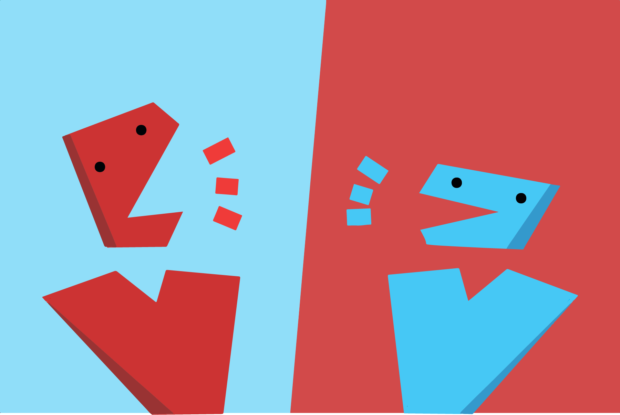

Santiago Gaughan /The Cougar
There is a lot of political division in this country, which is disastrous for its stability. In order to stop this division, change needs to happen within political parties, the media and the general public itself.
Even though the party system originally was and still is not perfect, it offers the chance for an exchange of ideas to occur at the federal and state level through legislation.
However, the political division is now the norm in this system. The first step towards change has to come from the Democratic and Republican parties, particularly in the way interactions occur with one another.
A study by the Pew Research Center revealed the United States stood out above most developed economies in political party conflicts. The study also mentions how even moderates in both parties are in major disagreement with one another, not just the more extreme members as one might expect.
Moderates can barely get along anymore, so reevaluating polarizing party leaders may be the first step to mend political tensions.
While this may help build the path towards bipartisanship, easing tensions has to happen in the general public as well. American people need to understand each other’s views by talking to people who disagree with them.
“People tend to live in places that are more homogeneous, where they’re less likely to run (into) people who have different political views than they do,” said political science professor Jeffrey Bryan Cole. “(Heterogeneity) would have to be more common. Otherwise, people are going to think about people who are different from them based on stereotypes in the news and media.”
As uncomfortable as it might be, engaging in conversations between people with different beliefs is the key to bipartisanship. It can also dispel stereotypes about average Democrats and Republicans.
Stereotypes blind people’s understanding of each other, keeping them from compromising and moving forward. Unfortunately, extreme and stereotypical content permeates the media.
“Fake news, for example: what we are seeing with the Facebook whistleblower (has shown) that more extreme and inflammatory content is what sells,” Cole said. “Media, a lot of times by nature, thrives on conflict.”
One strategy that media outlets use to fuel political conflict is narrowcasting.
“Narrowcasting [is] creating content that is intended for people with a particular ideological belief,” Cole said. “The news environment is not what it once was.”
Examples of narrowcasting include Fox News, which targets conservatives and MSNBC, which targets progressives. This creates an echo chamber for both sides, keeping from understanding one another and being able to engage in informed civil discourse.
The media, in addition to party leaders and the general public, needs to be held accountable for the contribution to the division between political parties.
By discussing differences in ideology and holding the two parties, the media and the people accountable for perpetuating a cycle of division, the United States could eventually move towards civil discourse and away from unproductive arguments.
JJ Caceres is a political science freshman who can be reached at opinion@thedailycougar.com
—
“Media, politicians, the public can all fix political division” was originally posted on The Cougar
